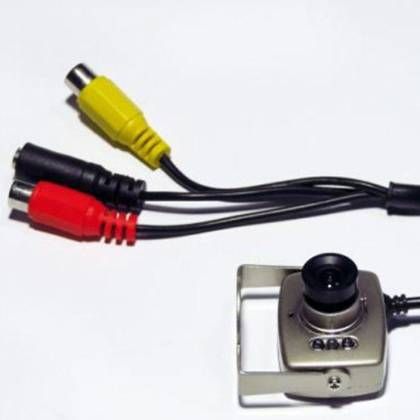Who invented television
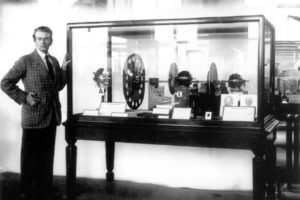 To say that television was invented by one person is probably not entirely true. The mind, knowledge and experience of dozens of scientists and engineers from all over the world have been invested in this matter. These are Topov, Tesla, Marconi and other engineers and researchers who invented and developed the use of radio waves for communication. It is impossible not to note the developments of the American Sawyer and the Frenchman Maurice, who developed the fundamental principle of television - transmitting pictures at a distance.
To say that television was invented by one person is probably not entirely true. The mind, knowledge and experience of dozens of scientists and engineers from all over the world have been invested in this matter. These are Topov, Tesla, Marconi and other engineers and researchers who invented and developed the use of radio waves for communication. It is impossible not to note the developments of the American Sawyer and the Frenchman Maurice, who developed the fundamental principle of television - transmitting pictures at a distance.
But at the turn of the 19th and 20th centuries, there simply were no technologies and equipment that could be used to put these ideas into practice.
In those ancient times, only mechanical means could be used, and the leadership in solving this issue belongs to Paul Nipkow, an engineer from Germany. He offered public attention, what we call electromechanical television. He developed a device that converted a picture into a set of electrical signals. By the way, they were mass-produced until the mid-thirties of the last century.
The next step was taken by his fellow countryman Brown, he received a patent for a glass tube, which served as the prototype of a cathode ray tube. M. Dickman, a student of Brown, used the tube for practical purposes, and showed the public a device with a rather small screen. The intermediate point was set by the Briton Brad, who showed the world's first television receiver, which contained all the usual components, but worked without sound.
The first broadcasts of electromechanical television were carried out in the 20s of the 20th century.
The content of the article
What did the first TV look like?
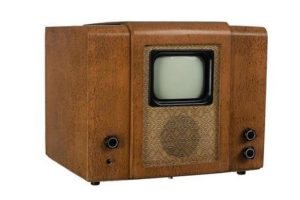 The first television receiver, which was a wooden box, was used to display programs. A magnifying glass was built into the front panel, which made it possible to examine the transmitted image. The number of lines in the picture contained from 30 to 120 terms; of course, from the point of view of our time, it is impossible to talk about any quality of signal transmission.
The first television receiver, which was a wooden box, was used to display programs. A magnifying glass was built into the front panel, which made it possible to examine the transmitted image. The number of lines in the picture contained from 30 to 120 terms; of course, from the point of view of our time, it is impossible to talk about any quality of signal transmission.
Mechanical TV
German inventor Paul Nipkow invented a disk with holes on it. They were arranged in a spiral. When it rotated, it became possible to scan images line by line and convert them into signals that were transmitted to the receiver.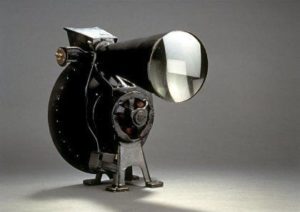
Who created the first television receiver in the Soviet Union?
The Soviet signaling apparatus was designed in what was then Leningrad, now St. Petersburg, at an enterprise called Comintern. Its action was based on the same Nipkow disk. In fact, it was a set-top box that was not equipped with its own radio receiver; the set-top box required connection to an ordinary radio receiver. To receive sound, the use of another radio was required.
The first Soviet television receiver was equipped with a screen with dimensions of 3*4 cm. In order to be able to see what was happening on it, the TV set included a powerful magnifying glass. In the thirties of the twentieth century, 3 thousand of these devices were produced.By the way, an interesting fact: at the same time, home-made design and production of television receivers became widespread, which made it possible to receive not only domestic broadcasts, but also foreign ones.
Who and when created the first color television?
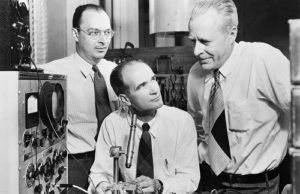 Engineering thought does not stand still and experiments on broadcasting color solutions were undertaken while mechanical television was being developed. The first inventions to help solve this problem. In particular, the technology of signal decomposition using a moving prism, its author Jan Szczepanik, was patented. Hovhannes Adamyan, who worked on the creation of two-color television, also made a significant contribution.
Engineering thought does not stand still and experiments on broadcasting color solutions were undertaken while mechanical television was being developed. The first inventions to help solve this problem. In particular, the technology of signal decomposition using a moving prism, its author Jan Szczepanik, was patented. Hovhannes Adamyan, who worked on the creation of two-color television, also made a significant contribution.
It should be recalled that these works were carried out at the very end of the 19th century. At the same time, Russian researcher Polumordvinov filed a patent for color translation using a mechanical scanner. But despite the activity of researchers, no actual working samples were created until the end of the thirties. The first color broadcast took place in Glasgow.
It was conducted by the founder of mechanical television, Baird. This broadcast was based on a method of alternately broadcasting three primary colors. For transmission, a Nipkow disk was used, with three rows of spiral holes, which were closed with red, green and blue filters.
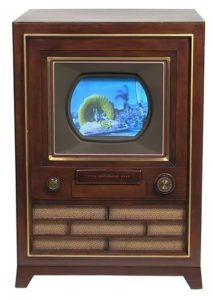 A device was installed on the receiver that synthesized the image using the same disks. A trial display of color television was carried out in 1938. It must be understood that such a television system was imperfect and did not receive mass development.
A device was installed on the receiver that synthesized the image using the same disks. A trial display of color television was carried out in 1938. It must be understood that such a television system was imperfect and did not receive mass development.
History and evolution of televisions
Despite all the efforts of scientists and engineers, television did not gain mass distribution. This was primarily due to the fact that the equipment was difficult to operate and high in cost.
Television became widespread after the invention of the kinescope. This invention belongs to A. Zvorykin, who immigrated to the USA from Russia after the October Revolution. In 1933, he invented a cathode ray tube, he called it an ionoscope. We call it a kinoscope, and it became the basis of modern electronic television.
During the Second World War there was no time for television, but in the USA, some companies mastered the serial production of receivers, and at the same time the development of a television network was underway. Antennas and television stations were erected en masse. The speed of development of television in the United States can be judged by two figures. In 1946, out of one hundred families living in the United States, five already had television receivers, but already in 1962, television receivers were installed in 90% of families.
In Europe and the USSR, which were practically destroyed by World War II, the development of television was much slower.
1950-1960 manufacturing companies mastered the production of models with screens measuring 7-10 inches. In those years, the basics of color signal broadcasting were determined. The production of colored products has been mastered in the USA. They began to be equipped with remote controls, but in those days it was connected to the TV using a cable. Other companies located all over the globe have also mastered the production of these devices. Even Japan, almost completely destroyed by the war, produced its own device.
1960–1970 TV receivers improved.Initially, they were produced using electric lamps, but the advent of semiconductor devices led to the fact that television receivers began to be produced using semiconductor devices. Monitor sizes have increased to 25.
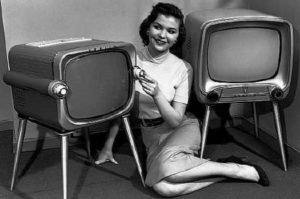 1970–1980 During this period of time, the production of products with black and white pictures was curtailed; the interests of manufacturing companies were directed both to the technological part, but also to the appearance of the device.
1970–1980 During this period of time, the production of products with black and white pictures was curtailed; the interests of manufacturing companies were directed both to the technological part, but also to the appearance of the device.
1980–1990 TV receivers did not change much; developers experimented with appearance and made wearable TV signal receivers. On the technological side, there was a transition from semiconductor elements to microassemblies and microcircuits. TV receiver housings are made of polymer materials.
1990-2000 – the list of manufacturers of television signal receivers is reduced, this is influenced by a decrease in demand from buyers and the filling of the household appliances market with television receivers.
Their bodies began to be made of plastic, which led to a significant reduction in the weight of the product.
The user was able to fully control television receivers using remote controls that operated on the principles of infrared radiation.
2000–2010 The development of technology at the beginning of the 21st century led to the emergence of flat-panel monitors, which are manufactured using plasma technology. The emergence of these technologies made it possible to organize the production of flat-panel LCD television receivers. By the end of this period of time, the production of television receivers with picture tubes (CRT) was discontinued. There were key manufacturers producing only LCD or plasma monitors.
2010–2015 the production of plasma television receivers was curtailed, only LCD televisions were produced, the screen backlighting was carried out with diodes.Television receivers have transformed into computer equipment and have the ability to use Internet resources. They can become part of your home LAN. The production of OLED television receivers and quantum dots that do not require external illumination has been mastered. If in 2010 television receivers with HD and Full HD monitors were mainly manufactured, then in 2015 more than 50% of television receivers have UHD resolution. Leading companies have begun producing television receivers with curved monitors measuring about 100“.
During these same years, 3D TVs were developed and put into mass production. It made it possible to show the viewer three-dimensional images, following the example of 3D cinemas. Nowadays, many companies continue to conduct research to improve this technology, without the use of any additional equipment, for example, without stereo glasses.
In practice, they are used in technologies that make it possible to provide 3D images on the monitors of television receivers, active and passive. The first divides the picture into two, and completely different ones. To view the image you will need to use special glasses. Image decomposition is carried out using polarization. Each line has its own frequency, which is filtered out by the glasses used. That is, everyone sees their own picture, which ultimately leads to the formation of a three-dimensional image.
Active technology involves the presence of an IR sensor that sends a signal to glasses that have the same sensor. All 1080 lines of pictures are supplied to the glasses. Following the signals transmitted from the television receiver, the microcomputer closes/opens the lenses. That's why the technology is called active. The speed of opening and closing is so high that the eye does not have time to replace it.Since each eye receives its own image, the brain already creates a 3D image.
As television technology developed, it became clear that among the reasons that imposed certain restrictions on the quality of the picture on the TV screen it was necessary to mention the poor security of the TV signal.
Its quality can only be improved by switching from analogue signals to digital ones. The improvement of television receivers is aimed at using methods for controlling signals and monitoring their operation.
Most countries with developed economies have long switched to digital signals. Now this process has affected our country as well. The transition to digital was determined by a government decision and it should be noted that in many regions of the country it has already been introduced.





